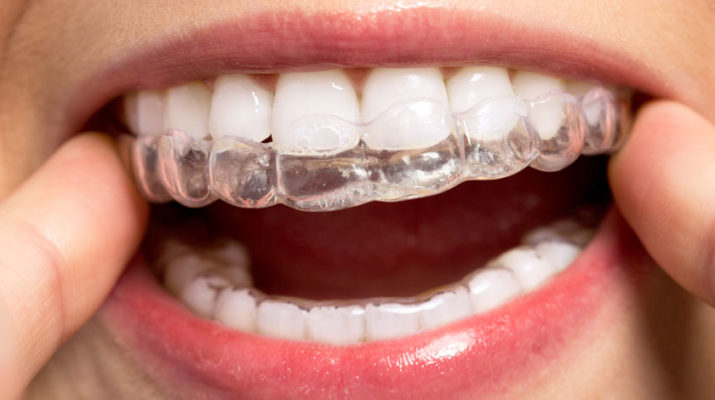Clear aligners, such as the brand name Invisalign, offer the advantage of nearly imperceptible orthodontic treatment, unlike traditional braces
By Deborah Jeanne Sergeant

Clear orthodontic aligners have improved a lot since the late 1990s.
“The technology has advanced and the materials we use and the design of the attachments that are bonded to the teeth allow ways to apply force to the teeth,” said Matt Walla, orthodontist with Owl Orthodontics, which has several locations in the Buffalo area. “They act as little handles. By developing better plastic materials, we get much better results.”
Clear aligners, such as the brand name Invisalign, offer the advantage of nearly imperceptible orthodontic treatment, unlike traditional braces. Once a patient at an orthodontic office completes an intake, exam and measurement protocol with the orthodontist’s team, a series of aligners is made specific to that patient and tailored to the treatment goals. As prescribed, the patient exchanges one aligner for the next in a series of incremental changes.
“The introduction of aligners is the single greatest thing to happen in the world of orthodontics,” Walla said. “Typically, adults who’d never had treatment would not seek treatment if they had to have braces on. They will go for it with clear aligners. It’s made being an orthodontist really fantastic.”
Since the devices are removable, patients can take them out for eating, which means they won’t face dietary restrictions like no sticky or hard foods. This also makes cleaning the teeth much easier — a big reason aligners are important for patients who are not as scrupulous with their at-home care. Patients must remove aligners only for eating and brushing or for occasional short periods of time.
“The aesthetics are amazing as is the ability to keep them clean,” Walla said. “If you have a special occasion and want to not have them in a couple hours, that’s okay.”
Aligners can correct most problems patients bring to their orthodontist’s office, but not all.
“At this point, nearly anyone is suitable,” Walla said.
Amy Richter, owner and orthodontist at Amy Richter Orthodontics in Buffalo, also said that aligners have improved.
“Not everyone is a candidate, but we can better treat more complex cases,” Richter said.
She said that people with impacted permanent teeth may not be good candidates, for example.
Another example of a disadvantage of aligners is the orthodontist’s ability to adjust the plan with the patient in the chair. Standard braces may be infinitely adjusted on the spot to suit the patient’s comfort level and how the oral plan unfolds. Teeth aren’t always compliant to the plan.
It’s not either/or. Some patients have an aligner on one arch and traditional metal braces on the other. They may begin with one appliance and end their treatment with the other.
With increasing interest in aligners and orthodontics in general, a number of companies have begun selling FDA-approved appliances for a do-it-yourself approach to orthodontics at home. Clients buy a kit to create their dental impressions and purchase the resulting aligners which they use in succession until their plan is complete, all without visiting an orthodontic office one time. There’s no professional assessment or measurements, X-rays or radiographs.
The reason many go the DIY route is financial. Traditional braces and aligners can cost around $6,000. The “DIY” services like SmileDirectClub offer a series of aligners for $1,895. But the professionals warn buyers to beware of services such as this.
“The biggest concern we have is there might be undiagnosed, underlying problems that won’t be identified prior to starting orthodontic treatments, whether periodontal problems or decay on the teeth,” Walla said.
The kits cannot replicate all the services and procedures orthodontists routinely do to help correct appearance and function, such as tooth reshaping to help oddly shaped teeth fit together better. DIY aligners lack attachments that help them properly rotate a tooth into alignment.
Should a DIY-er run into problems, they don’t have a means to correct them except for going to an orthodontist, which incurs more expense than if they went there initially.
Photo: Once the aligner is totally in place, it is very difficult to see unless one is looking for it. It’s like contact lenses for orthodontia.

